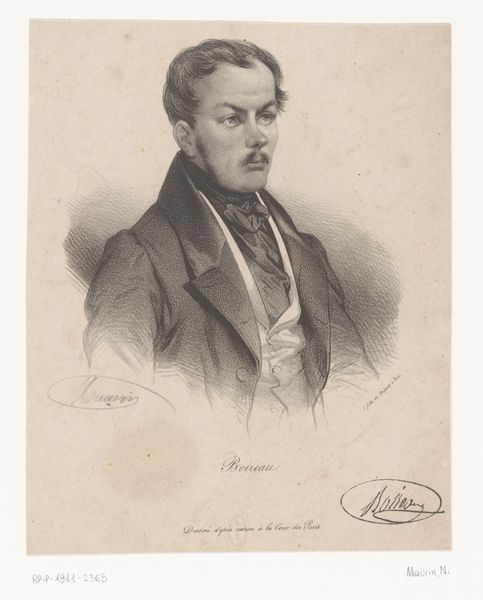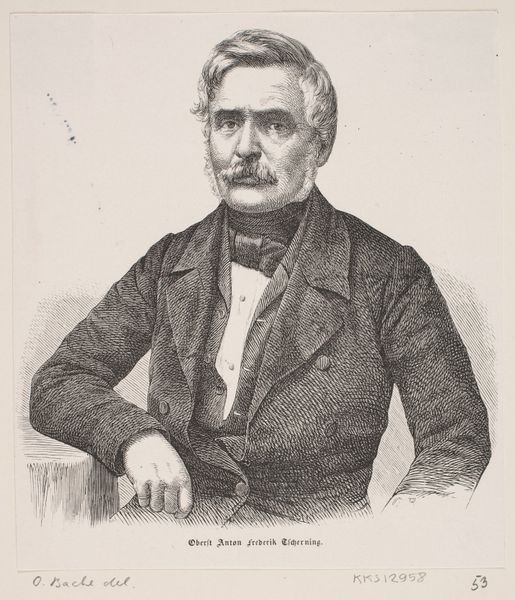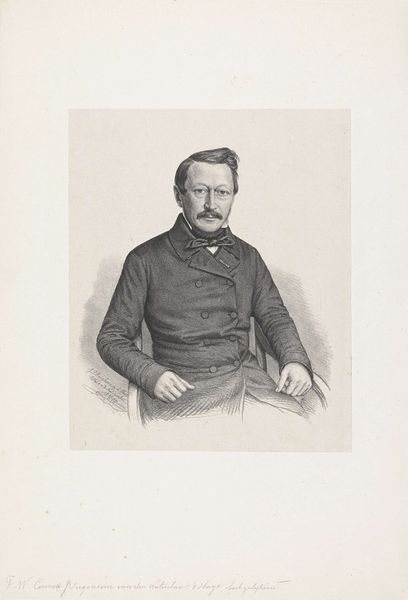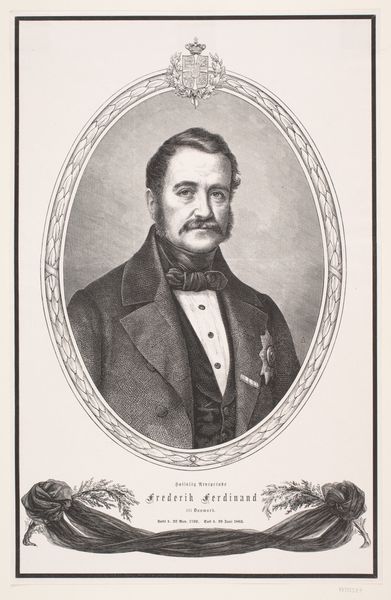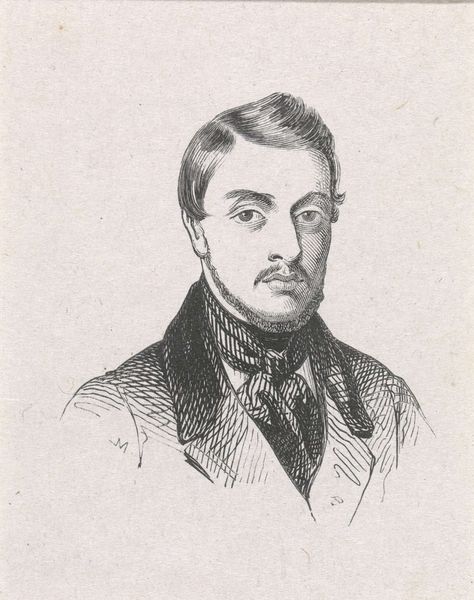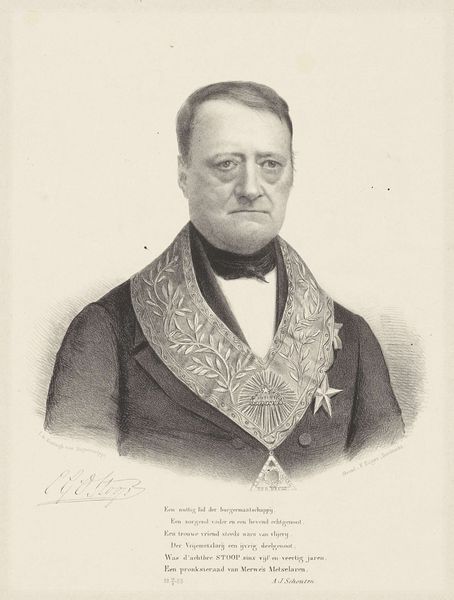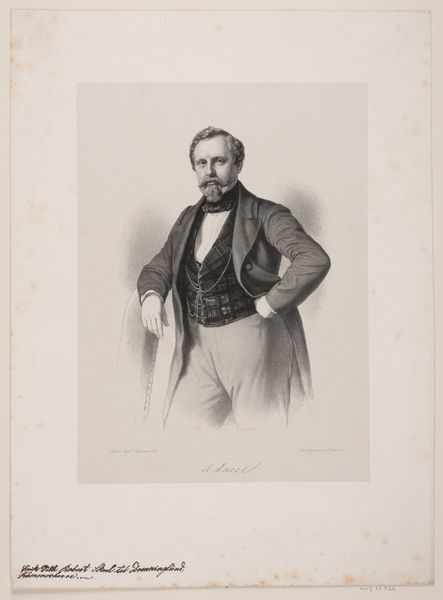
Dimensions: 180 None (height) x 145 None (width) (bladmaal)
Curator: This is a lithograph from 1862, titled "F. H. Grüner," now housed in the collection of the Statens Museum for Kunst. Editor: There's a rather imposing figure, isn't there? Stern, but with an air of… well, satisfaction, perhaps. The artist uses strong chiaroscuro. It accentuates a palpable presence. Curator: It’s a striking depiction, no doubt. Lithography during this period offered artists a cost-effective way to disseminate imagery, particularly portraits of notable figures to wider audiences. Grüner, I believe, was a figure of some local prominence. Editor: The texture is remarkable, isn’t it? Notice how the hatching creates depth, particularly in the coat, yet it also manages a certain lightness around the face. The gaze is quite compelling; though fixed to the side, there is a commanding self-assuredness. Curator: Indeed. In terms of visual politics, the portrait style aligns with the emergent national identities forming at that time, presenting the subject as a pillar of society. The lack of ornate background also emphasizes this and focuses on the subject's importance. Editor: Yet that bare background provides an intriguing minimalist quality, almost isolating him. There's something quite potent in that very lack. Also note how the button placement draws attention down to the corner where the subject fades off the page, a subtle form of depth I appreciate. Curator: An interesting point. The choice of rendering him in lithograph would, of course, have political implications. Was the goal of the work for broad dissemination? How might that intention impact our understanding of Grüner and the role he played? Editor: Perhaps, or maybe the artist admired the texture achievable through lithography, which creates that illusion of weight. We should consider how lithography lends itself to portraying character, shaping our perceptions and ideas around this character. Curator: It's a nuanced interaction between those aesthetic capabilities of the media and their reception in the time of great political changes. This tension encapsulates why Grüner is more than just a historical record, but also an enduring social artifact. Editor: Well put. The image certainly captures the spirit of an era and a specific sense of personal conviction.
Comments
No comments
Be the first to comment and join the conversation on the ultimate creative platform.
